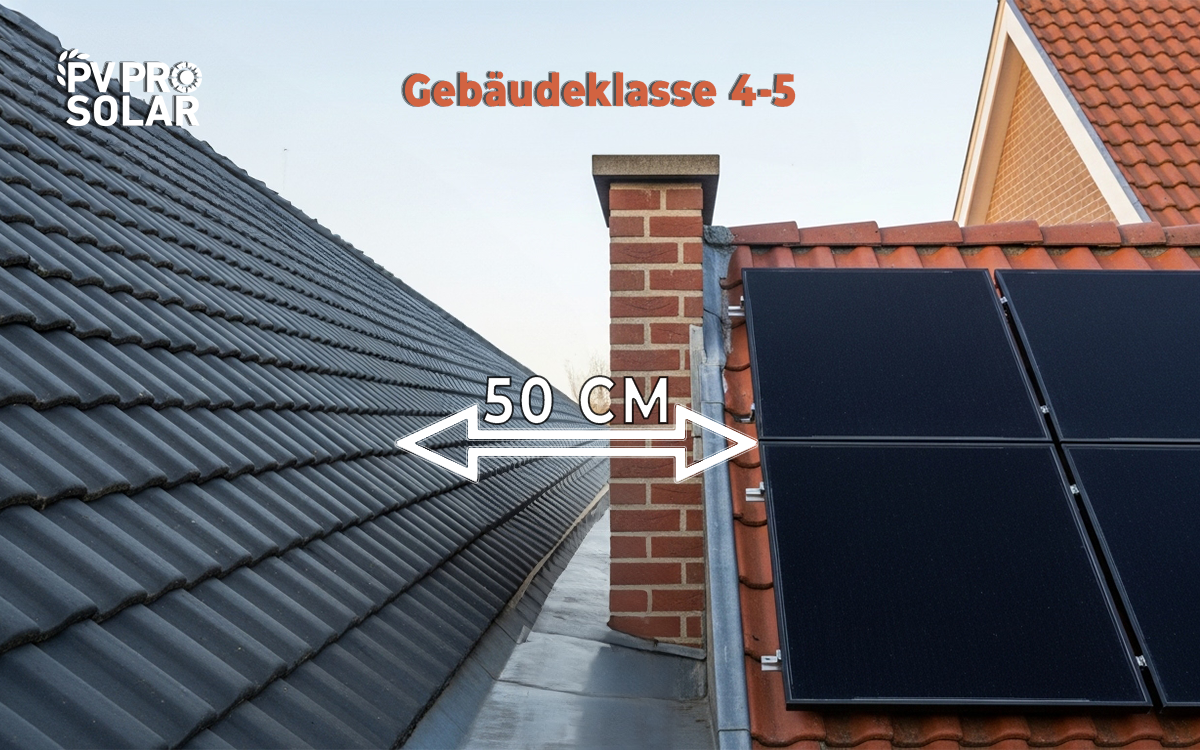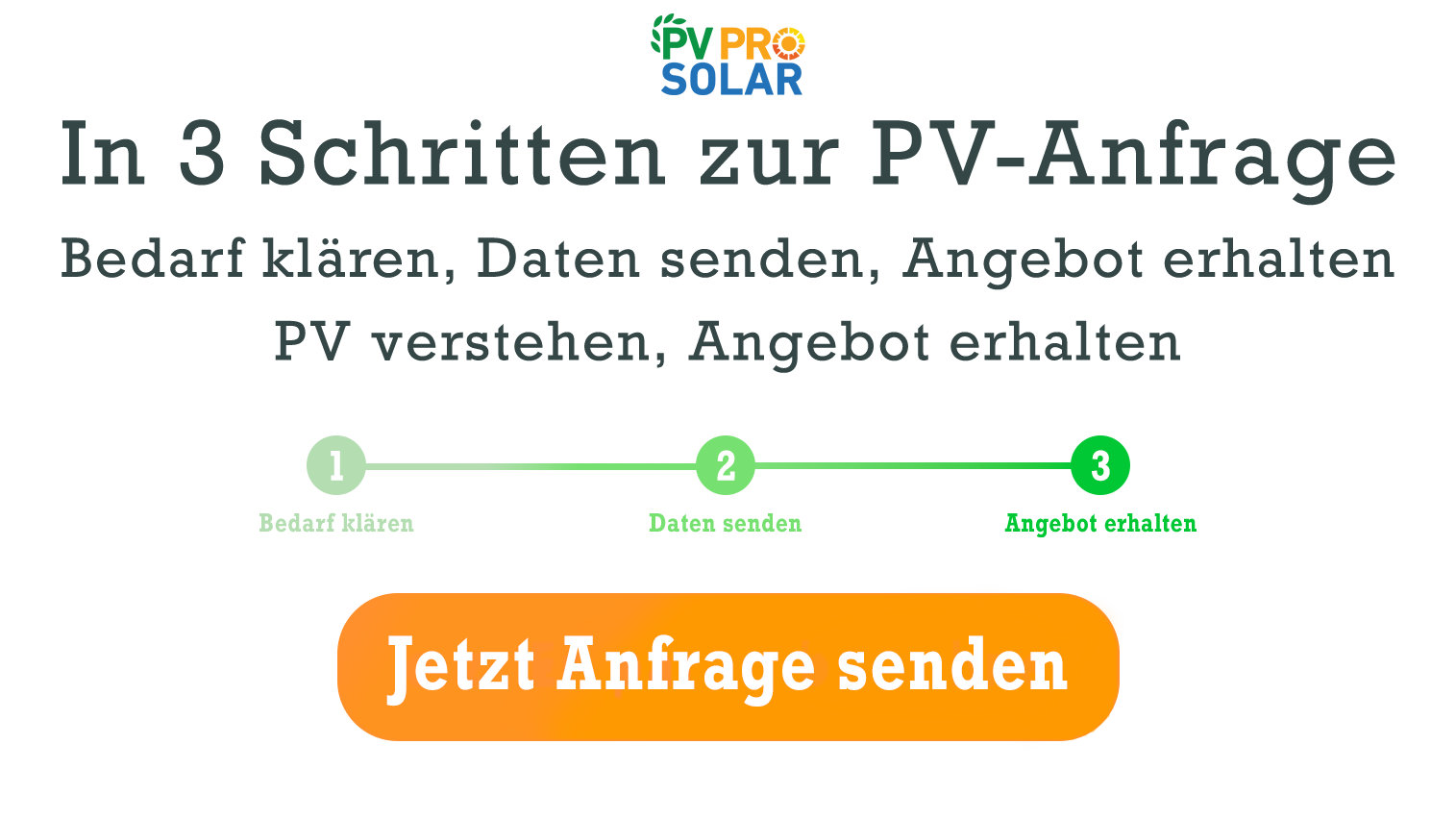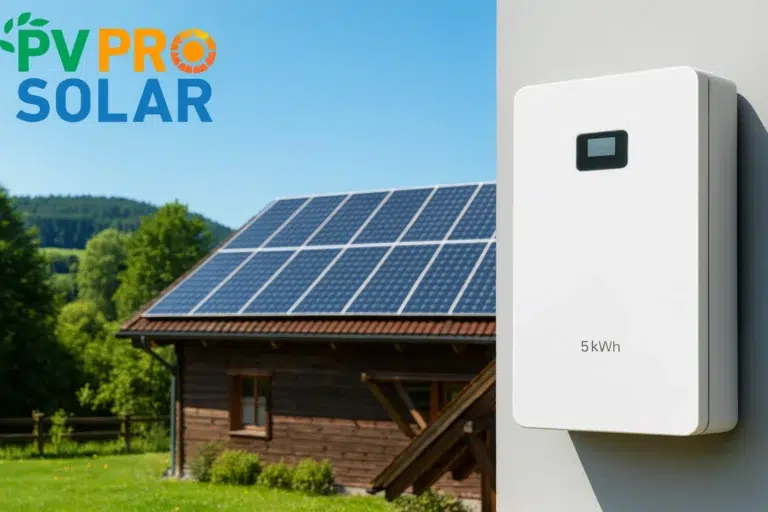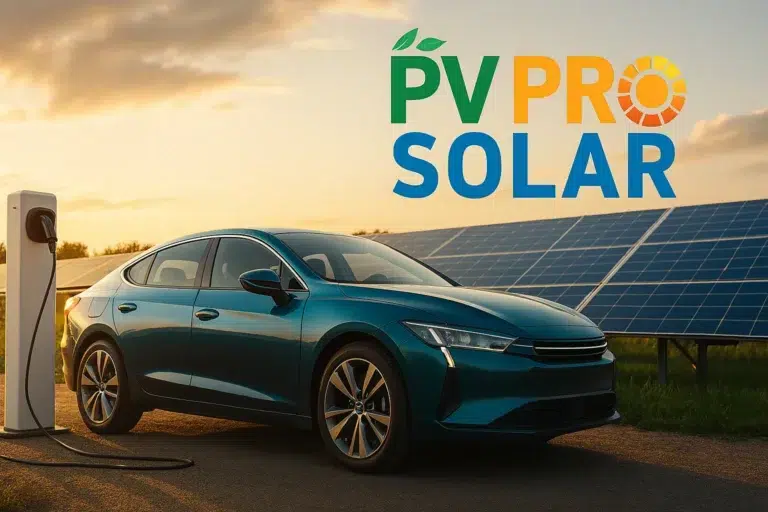New PV Fire Separation Rules in Lower Saxony: What Applies Now?
Since early 2025, the State of Lower Saxony has significantly simplified the regulations for photovoltaic systems. Anyone planning to install solar panels on their roof now benefits from clearer requirements and fewer bureaucratic hurdles. The most notable change: for buildings under 7 meters in height, no fire separation distance (brandabstand Niedersachsen) is required anymore — a reform that affects planners, installers, and homeowners alike.
Legal Background: NBauO & DVO-NBauO
The legal basis for this change lies in the Implementation Regulation to the Lower Saxony Building Code (DVO-NBauO), which was amended in late 2024. The goal: to accelerate solar expansion and simplify permitting procedures.
The new rule differentiates between small buildings (Building Classes 1–3) and larger buildings (Building Classes 4–5). For smaller structures, the distance from property boundaries — and especially from firewalls — has been completely abolished. For larger buildings, a minimum separation of 50 cm now applies.
This definition of distance is based on the building’s height and its structural use. While several German states have taken similar steps, Lower Saxony went a step further by fully eliminating the requirement for Building Classes 1–3.
Both the Chamber of Crafts Hanover and the Chamber of Architects of Lower Saxony welcomed the change, emphasizing that it enhances planning flexibility and encourages investment in renewable energy.
What Does This Mean for Single-Family, Row, and Semi-Detached Houses?
For typical residential buildings under 7 meters — i.e., small buildings in Building Classes 1–3 — the 2025 amendment means: photovoltaic systems may now be installed without any fire separation distance (brandabstand Niedersachsen) directly adjacent to firewalls.
This primarily affects structural uses in dense urban housing, such as terraced or semi-detached houses, where firewalls commonly separate two units. Previously, even small PV systems were often impossible to install due to strict clearance requirements.
With the new regulation, the old 1.25-meter restriction is gone. Homeowners can now utilize the entire roof surface efficiently, increasing both system output and economic return.
According to the Climate Protection and Energy Agency of Lower Saxony, this is a major step forward for the energy transition — especially since many row houses previously remained solar-free due to fire safety concerns.
Taller Buildings (GK 4–5): 50 cm Minimum Distance
For larger buildings in Building Classes 4 and 5, certain conditions remain. Section 11 of the DVO-NBauO stipulates a minimum fire separation distance in Lower Saxony of 50 cm.
This applies even when the PV system’s components are not fully non-combustible. Buildings with structural elements made of materials such as aluminum frames or glass-film modules must still adhere to the 50 cm distance.
The Lower Saxony Chamber of Architects clarifies that this threshold is based on a modernized fire risk assessment: a half-meter clearance provides adequate safety without unduly restricting design freedom.
This results in a balanced compromise between building code safety requirements and renewable energy promotion.
Material & Roof Type: Does It Apply to Metal Roofs and Glass-Glass Modules?
The DVO-NBauO does not differentiate by material type. The only decisive factor is the fire separation distance in Lower Saxony and the building’s class.
This means that PV systems on metal roofs (trapezoidal or standing seam profiles) can also be installed without clearance when mounted on small buildings. The same applies to glass-glass modules, which are inherently more fire-resistant.
The regulation, therefore, simplifies installation on industrial and agricultural buildings, where fire-separating building components are often metallic. Again, the focus is on building height, not material composition.
However, planners should note that insurance companies may impose additional requirements — as discussed in the next section.
Key Additional Requirements (Planning & Installation)
Despite the relaxed distance rules, several technical safety measures remain mandatory:
- PV cables must not cross firewalls. This prevents fire from spreading along wiring paths. Cables should always be routed in designated fire-safe zones.
- Check insurance conditions. Even though the fire separation distance in Lower Saxony has been reduced, insurers such as those referencing VdS 2234 still recommend larger clearances — sometimes 2.5 to 5 meters. These insurance terms take precedence if specified in the policy. In practice, this means that even if no clearance is required by law, your insurer may demand more space for buildings with increased fire risk.
- Consider the structural use. Buildings used for manufacturing, workshops, or storage of flammable materials are subject to stricter standards. The local fire brigade may also impose additional safety measures.
- Documentation & certification. Every installation should be executed by a certified contractor with proof of static load, wind, and snow resistance, and fire safety planning — particularly for structural systems combining different roof materials.
Practical Example: 0.65 m Distance on a Metal Roof
A practical example illustrates how the regulation works: A commercial building 8 meters high (GK 4) installs a PV system on a trapezoidal metal roof. The system is placed 0.65 meters away from the firewall.
Since the prescribed distance for this building class is 50 cm, the setup is fully compliant. If the same building were only 6.5 meters tall (GK 3), it could be built with zero distance (brandabstand Niedersachsen = 0 m).
This example shows how flexibly and realistically the new rule can be applied in the field.
Checklist for Owners & Planners
Before starting any PV project, follow these key steps:
- Determine your building class.
- < 7 m → GK 1–3 → no fire separation distance (brandabstand Niedersachsen)
- 7 m → GK 4–5 → at least 50 cm
- Check roof type & structural integrity. Especially important for metal roofs due to wind and snow loads.
- Plan cable routing carefully. Never run electrical lines over firewalls; use fire-rated penetrations only.
- Consult your insurer early. Some insurers require compliance with VdS 2234 or their own stricter standards.
- Clarify building permits if needed. In most cases, rooftop PV systems within the approved height limits are exempt in Lower Saxony.
- Ensure full documentation. Proper documentation is essential for insurance, safety inspections, and future maintenance.
Following this checklist ensures compliance with both building codes and insurance terms.
What Does the Change Mean for Climate Policy?
The reform of fire separation rules in Lower Saxony is more than a technical update — it’s a strategic climate measure.
By enabling structural use of rooftops in densely built areas, thousands of previously unsuitable roofs can now host solar systems. This boosts local energy production and reduces grid dependency.
The Climate Protection and Energy Agency of Lower Saxony describes this reform as a “major impulse for private and commercial rooftops,” noting that greater planning security drives faster investment.
Thus, the State of Lower Saxony positions itself as a national pioneer — a model that could inspire other German regions.
With the updated definition of fire separation, the state has established a modern framework that balances safety and practicality.
- GK 1–3: 0 m distance – full roof utilization
- GK 4–5: 50 cm distance – safe and efficient
- Additional duties: cable routing, insurance, documentation
Those who follow these principles can operate their PV systems safely, legally, and economically.
Get started today: Visit PVPro Solar GmbH for a free roof inspection and consultation. Our experts provide professional guidance on planning, fire safety, and installation — ensuring your solar project in Lower Saxony is fully compliant and future-proof.
Sources:
- Klimaschutz- und Energieagentur Niedersachsen (KEAN): „Reihen-/Doppelhäuser ≤ 7 m: keine Brandschutzabstände bei PV-Dachanlagen.“Handwerkskammer Hannover: Mitteilung
- Architektenkammer Niedersachsen (AKNDS): Fachmeldung zu § 11 DVO-NBauO.
- Änderung der Allgemeinen Durchführungsverordnung zur Niedersächsischen Bauordnung (DVO-NBauO)
- Durchführungsverordnung zur NBauO geändert
No. In Lower Saxony, it has been abolished. For GK 1–3, no clearance is required; for GK 4–5, only 50 cm.
Yes, provided the building is under 7 meters high and meets structural fire protection standards.
Not for GK 1–3. However, in other federal states, a 30 cm parapet may still be required.
Then those stricter insurance terms take precedence. Many insurers reference VdS 2234, which may specify larger gaps depending on fire risk.
No, such cases require special consideration. Buildings with hazardous materials may need extra fire barriers or wider spacing. Is the old 1.25 m rule still valid?
Can I install PV without spacing on a row house?
Does the firewall need to extend above the roof?
What if my insurer requires more distance?
Does this rule apply to buildings with elevated fire risk?






